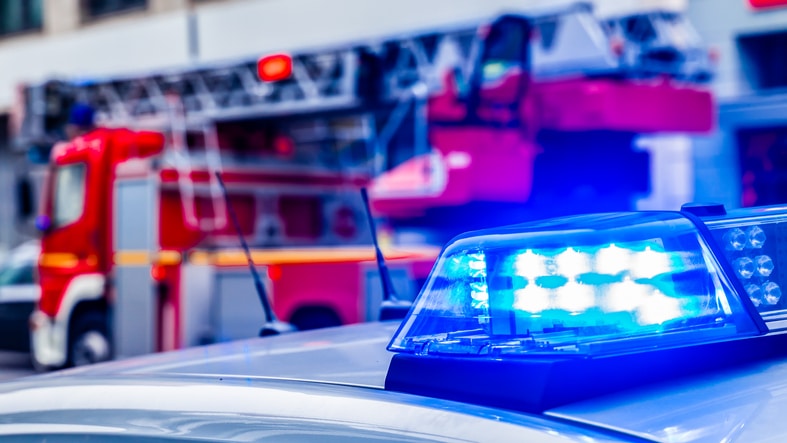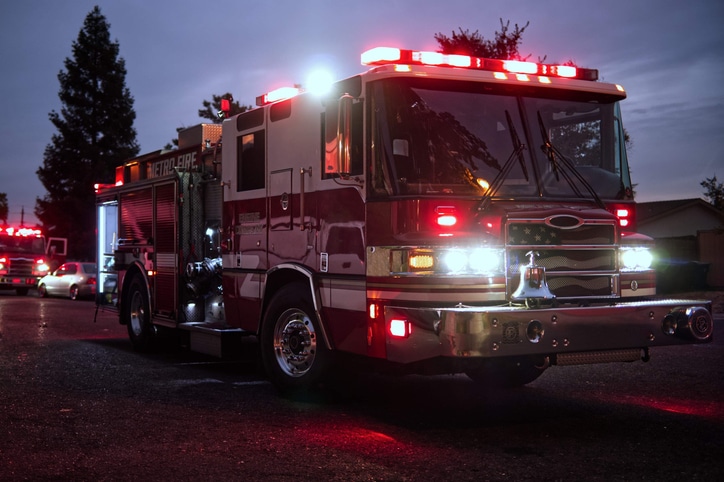Upfitting emergency vehicles has come a long way from installing sirens and lights. Advanced computers and intricate communication systems are a few of the items you may need for your emergency vehicle. Each type of vehicle requires specialized equipment that’s easily accessible and mounted securely.
Whether it’s an ambulance, a fire truck, or a police car, first responders depend on their vehicles and the equipment they’re fitted with to save lives and get the job done. Adding new equipment, specialized accessories, or the latest technology can enable an emergency crew to more effectively and efficiently complete their jobs.
Top Considerations for Successfully Upfitting Emergency Vehicles
Finding out what you need and preparing is the first step when fitting emergency vehicles.
What Type of Vehicle Needs Upfitting? 
The technology needed in a patrol car differs from what an ambulance needs. A tactical vehicle will require items other first responders may not need. A fire truck will likely require a hose reel and water pump installation, while an ambulance needs various medical supplies. Your upfitting needs may vary from vehicle to vehicle. For example, there are conventional fire trucks and various types of fire engines that require different equipment.
What Size and Style of Vehicle Needs Upfitting?
You’ll want to make a detailed list of all the items each car, truck, or SUV needs. You’ll also need to consider each auto’s size. The size and body type of a vehicle will determine what kind of upfitting you can do, where equipment can be added, and what kind of mounts will work.
What Are the Requirements for Your Vehicles?
What are the local, state, and federal requirements for the type of vehicles you’re upfitting? Localities within the same state may have different requirements for police and other first responders. You’ll also need to consider the terrain you’ll primarily be traveling on and the specific weather conditions in your area.
What Items Do Your Vehicles Currently Have?
Perhaps you already have several of the necessary items. You may need to test equipment to ensure it’s in top working order. Some equipment may need upgrading, while others need to be replaced.
What Is Your Budget?
Your budget will determine the upgrades and types of products you can install. If several vehicles need upfitting, you must multiply the costs over your entire fleet. You’ll also need to decide if every emergency vehicle in the fleet will need the same upfitting. It is essential to find an upfitting company that provides quality craftsmanship and a lifetime warranty for its work.
What Are Your Time Requirements?
How quickly do you need your vehicles upfitted? If your current fleet is no longer operating at the highest levels possible, you’ll want to work with a company that can do the job quickly and efficiently. If your fleet still functions effectively, you’ll want to plan and schedule your next upfitting to ensure all vehicles operate at maximum efficiency.
What Schedule for Upfitting Will Work Best?
Another aspect of juggling time requirements includes the best time to conduct the upfitting process. Is there a busy time each year or upcoming events that require most of your emergency vehicles to be in use? You’ll want to schedule upfitting during the least busy time or possibly only have a few worked on at a time.
Upfitting Options Available
Those who work in the emergency service industry need highly customized cars, trucks, vans, and SUVs. Many first responders also need equipment to perform several functions.
This may include transporting prisoners or medically compromised individuals. The job may require carrying technologically advanced equipment. Often, specific lighting is needed. An emergency vehicle often needs to be upfitted for all of these reasons. Trends and technological advances will often determine what upfitting your vehicles will need.
Several products and features should be considered when upfitting emergency vehicles. The following are some of the most basic equipment to keep in mind when deciding what to include in your plan.
Light Bars and Directional Lighting: Your fleet will likely need interior and exterior lighting that works well in all weather conditions. Consider programmable lighting to include different intensities and patterns.
Speakers and Sirens: Any emergency vehicle must alert other vehicles and individuals. Moving quickly in traffic is essential to a first responder’s job.
Weapon Vaults: Secure weapon vaults are a necessity in law enforcement vehicles. TCS Upfitting can expertly install various mounts and vaults in your fleet.
Computers and Mounts: Your emergency vehicles need the best mobile computers available. You will likely need adjustable and flexible mounts when used on the job.
Prisoner Seating and Partitions: Police vehicles will need prisoner transport systems providing high-security elements that keep prisoners and employees safe.
Equipment Racks & Storage Boxes: Storage with secure locks and easy access is crucial for any emergency vehicle. Some storage units may be exposed to the elements, while others are inside.
Camera Systems: Many first responders now require camera and video systems. Camera mounting is just as important as the cameras you use. It’s critical to ensure cameras stay secure and in place during emergencies and that all footage is clear.
Contact TCS Upfitting For Emergency Vehicle Customization
TCS Upfitting can meet all your emergency upfitting needs. We have experience upfitting all types of emergency vehicles, including ambulances, fire trucks, and police cars. Whether it’s a single vehicle or a fleet of first-responder vehicles, we can equip you quickly and efficiently with high-quality equipment.
When fitting emergency vehicles, we offer extensive product selection and expert installation services. Our team of professionals can customize vehicles according to each client’s specifications and provide a lifetime warranty. Contact TCS Upfitting today to get started.



